Part 2 in this series, this week I wanted to dig into price reversal patterns that typically appear during market tops.
Rising Wedges
The rising wedge is a bearish reversal pattern formed by two converging upward lines. To confirm a rising wedge, price must move between top and bottom lines and touch them each at least twice to confirm this pattern.
This pattern marks the shortness of buyers. This one is characterized by a progressive reduction of the amplitude of the waves. We would like to see trade volume confirm as each successive wave would bring lower volume such that at the end of pattern there are almost no buyers left confirming a bearish reversal.
Here is a graphical representation of a rising wedge:
 And a real life example of how they can play out.
And a real life example of how they can play out.
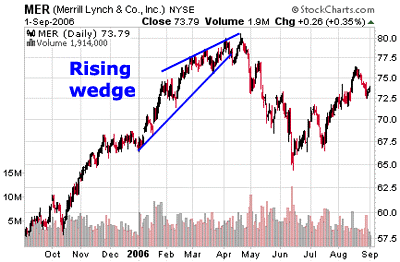
Here are some statistics about rising wedges:
- In 82% of cases, there is a downward exit
- In 63% of cases, the target of the pattern is reached once the support broken
- In 53% of cases, a pullback occurs
- In 27% of cases, false breakout occur
Head and Shoulders
The head and shoulders pattern is one of the most common reversal formations. It is important to remember that it occurs after an uptrend and usually marks a major trend reversal when complete. While it is preferable that the left and right shoulders be symmetrical, it is not an absolute requirement. They can be different widths as well as different heights. Identification of neckline support and volume confirmation on the break can be the most critical factors. The support break indicates a new willingness to sell at lower prices. Lower prices combined with an increase in volume indicate an increase in supply. The combination can be lethal, and sometimes, there is no second chance return to the support break. As the pattern unfolds over time, other aspects of the technical picture are likely to take precedence.
Here is a graphical representation of a head and shoulders pattern:
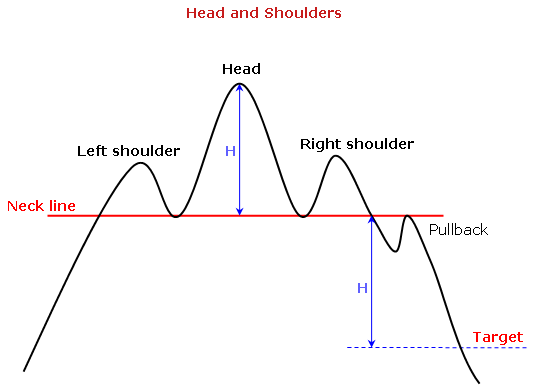
And a real life example of how they can play out.
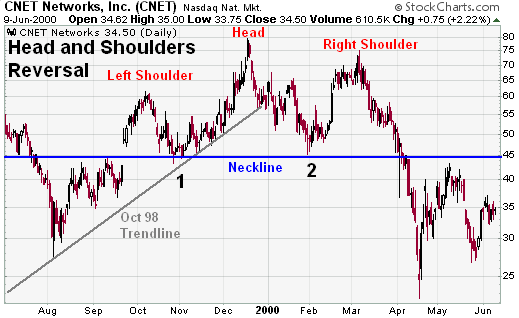
Here are some statistics about the head and shoulders pattern:
- In 93% of cases, there is a downward exit
- In 63% of cases, the target of the pattern is reached once the neckline broken
- In 45% of cases, a pullback occur on the neckline
Double (and Triple) Top
The double tops is a bearish trend reversal pattern that often marks the end of an uptrend and the start of a down trend. It consists of two consecutive peaks that reach a resistance level at more or less the same high value, with a valley separating the two peaks. The low of the valley is important for price projection purposes, but the shape that the peaks take is not important. Volume is also of importance, with the volume on the second peak preferably lower than the volume on the first peak. At times, the double top pattern can form a third top, creating a triple top pattern.
Here is a graphical representation of a double top pattern:

And a real life example of how they can play out.
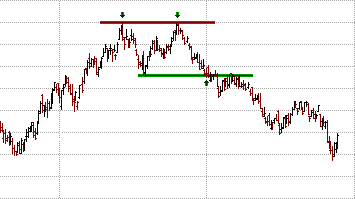 Here are some statistics about the double top:
Here are some statistics about the double top:
- In 75% of cases, there is a bearish reversal
- In 71% of cases, the target of the pattern is reached once the neckline broken
- In 61% of cases, a pullback occur
Where are we today?
From a longer term view, I had been closely watching the rising wedge form and noticed 2 weeks ago we broke down outside the pattern (see below) but subsequently have moved back inside.
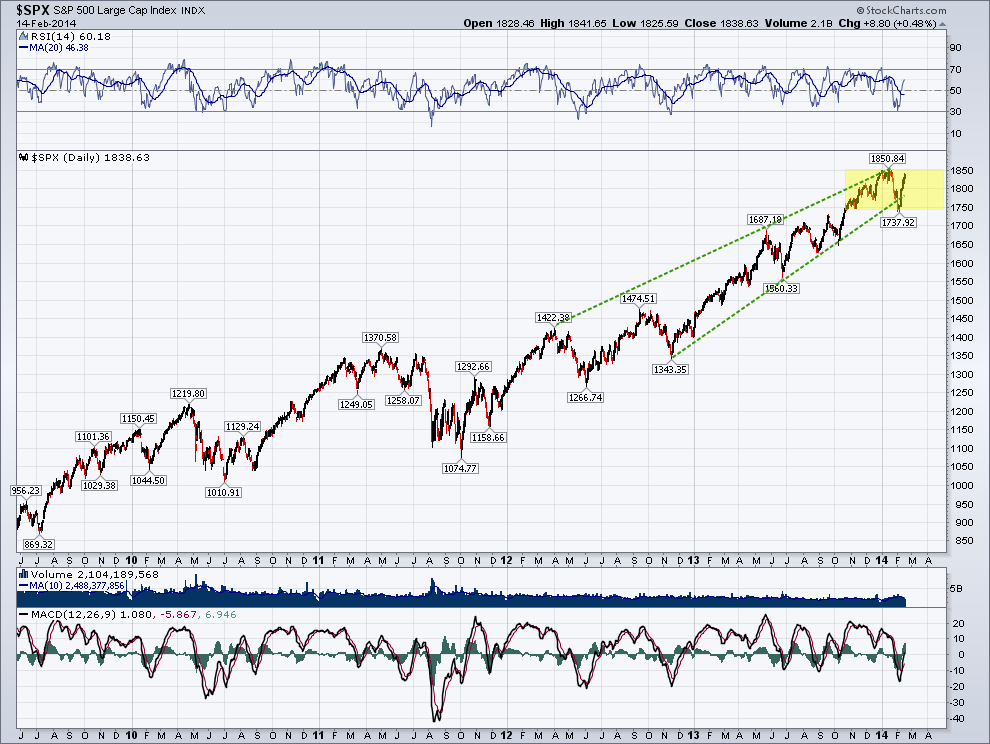
On a shorter term view, the head and shoulders pattern I saw developing once we broke out of the wedge has since been invalidated since the symmetry between the right and left shoulders has been lost. Instead what you now see developing (in the chart below) is the possibility for a double/triple top. You are never sure when patterns begin to form so it is important to follow them as the can morph over time. Exactly what just occurred over the past two week where we moved from a head and shoulders to double top. The good thing is that double tops are one of the easiest patterns to manage because it becomes apparent very quickly whether or not it is valid, unlike head and shoulders where the pattern takes time to develop and be confirmed. We will likely know in the next couple of weeks, if not sooner, because once price moves above the prior high (the green dotted line in the chart below), the double top pattern becomes invalid as we have then created a higher high. As a result, near term concerns about a larger correction will have been significantly reduced and we are back to the prior bullish trend.















